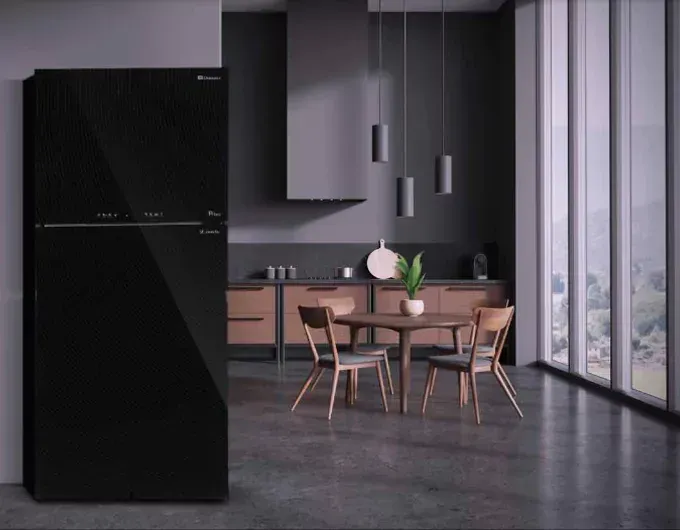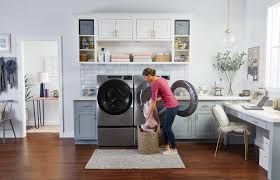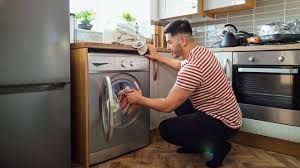How to Service a Kenmore Refrigerator?
A well-maintained refrigerator is crucial for any household, and servicing your Kenmore refrigerator regularly can prolong its life and ensure it runs efficiently. Regular maintenance not only helps to prevent unexpected breakdowns but also saves energy, reducing your utility bills. This guide provides step-by-step instructions on how to service your Kenmore refrigerator, covering everything from cleaning and defrosting to troubleshooting common issues. By following these guidelines, you can maintain optimal performance, safeguard your food quality, and avoid costly repairs. Whether you're a DIY enthusiast or a novice, these easy-to-follow steps will help you keep your refrigerator in top condition.
1. Safety First
Before you begin servicing your Kenmore refrigerator, always prioritize safety:
- Unplug the Refrigerator: To prevent electrical shocks, disconnect the refrigerator from the power source.
- Remove Food Items: Empty the refrigerator and freezer compartments to make cleaning and servicing easier.
- Wear Protective Gear: Use gloves and safety glasses to protect yourself from sharp edges and cleaning chemicals.
2. Cleaning the Interior
Regularly cleaning the interior of your refrigerator helps maintain hygiene and prevents the buildup of odors.
Materials Needed:
- Mild detergent or baking soda
- Warm water
- Soft cloth or sponge
- Toothbrush
- Dry towel
Steps:
- Remove Shelves and Drawers: Take out all removable parts and wash them with warm, soapy water. Rinse and dry thoroughly.
- Clean the Interior: Wipe the inside walls, floor, and ceiling with a mixture of mild detergent or baking soda and warm water. Use a toothbrush to scrub any stubborn stains or stuck-on food particles.
- Dry Completely: Use a dry towel to remove any moisture from the interior surfaces before replacing the shelves and drawers.
3. Cleaning the Exterior
The exterior of your refrigerator should also be kept clean to maintain its appearance and prevent damage.
Materials Needed:
- Mild detergent
- Warm water
- Soft cloth or sponge
- Stainless steel cleaner (if applicable)
- Dry towel
Steps:
- Wipe Down the Exterior: Clean the exterior surfaces with a cloth dampened with a mixture of mild detergent and warm water.
- Clean Stainless Steel: If your refrigerator has stainless steel surfaces, use a stainless steel cleaner to remove fingerprints and smudges.
- Dry Thoroughly: Use a dry towel to remove any remaining moisture.
4. Defrosting the Freezer
If your Kenmore refrigerator does not have an automatic defrost feature, you'll need to defrost the freezer manually to prevent ice buildup.
Steps:
- Unplug the Refrigerator: Ensure the refrigerator is disconnected from the power source.
- Remove Food Items: Transfer perishable items to a cooler.
- Open the Freezer Door: Allow the ice to melt naturally. You can speed up the process by placing bowls of hot water inside the freezer.
- Remove Melted Ice: Once the ice has melted, wipe up the water with a towel.
- Clean the Freezer: Follow the same cleaning steps as for the refrigerator interior.
- Plug in the Refrigerator: Once the freezer is dry, plug the refrigerator back in and replace the food items.
5. Checking and Replacing the Water Filter
If your Kenmore refrigerator has a water dispenser or ice maker, it's important to replace the water filter regularly.
Steps:
- Locate the Water Filter: Refer to your refrigerator's manual to find the water filter's location.
- Remove the Old Filter: Turn off the water supply, then twist and pull the old filter out.
- Install the New Filter: Insert the new filter and twist it into place. Turn the water supply back on.
- Flush the System: Run water through the dispenser for a few minutes to clear out any air and impurities.
6. Cleaning the Condenser Coils
Dirty condenser coils can cause your refrigerator to overheat and run inefficiently. Cleaning them regularly helps maintain optimal performance.
Materials Needed:
- Vacuum cleaner with brush attachment
- Coil brush
Steps:
- Locate the Coils: The condenser coils are usually located at the back or bottom of the refrigerator.
- Vacuum the Coils: Use a vacuum cleaner with a brush attachment to remove dust and debris from the coils.
- Brush the Coils: Use a coil brush to clean any remaining dirt.
7. Checking the Door Seals
Worn or damaged door seals can cause cool air to escape, making your refrigerator work harder. Check the seals regularly and replace them if necessary.
Steps:
- Inspect the Seals: Check for any cracks, tears, or gaps in the door seals.
- Clean the Seals: Wipe down the seals with a damp cloth to remove any dirt or grime.
- Replace Damaged Seals: If the seals are damaged, refer to your refrigerator's manual for instructions on replacing them.
8. Troubleshooting Common Issues
Refrigerator Not Cooling Properly
- Check the Temperature Settings: Ensure the refrigerator and freezer are set to the correct temperatures (usually 37°F for the refrigerator and 0°F for the freezer).
- Inspect the Door Seals: Make sure the door seals are not damaged and are sealing properly.
- Clean the Condenser Coils: Dirty coils can cause cooling issues.
- Check the Evaporator Fan: Make sure the fan inside the freezer is working properly.
Water Leakage
- Check the Water Supply Line: Inspect the water supply line for leaks or damage.
- Clear the Drain Hole: If the drain hole is clogged, water can accumulate and leak.
- Check the Defrost Drain: Make sure the defrost drain is not clogged.
Ice Maker Not Working
- Check the Water Supply Line: Ensure the water supply line is connected and not kinked.
- Inspect the Water Inlet Valve: Make sure the valve is not clogged or malfunctioning.
- Check the Ice Maker Assembly: Ensure there are no obstructions and the ice maker is not frozen.
9. When to Call a Professional
While many maintenance tasks can be done by homeowners, some issues require professional assistance. Call a technician if:
- The Refrigerator Is Not Cooling: If basic troubleshooting doesn't resolve the issue, there may be a problem with the compressor or refrigerant levels.
- Strange Noises: Unusual noises can indicate a problem with the motor or fan.
- Electrical Issues: If you experience electrical problems or frequent tripping of circuit breakers, contact a professional immediately.
Regular Maintenance
Regularly servicing your Kenmore refrigerator is essential for maintaining its efficiency and prolonging its lifespan. Consistent upkeep helps to prevent minor issues from escalating into significant problems, ensuring that your appliance remains in optimal working condition. By following these steps, you can keep your refrigerator running smoothly and address any issues before they become major problems. Remember, while many tasks can be performed by the homeowner, it's important to recognize when a problem is beyond your expertise. Don’t hesitate to call a professional for more complex repairs to avoid potential damage and ensure the safety and longevity of your refrigerator.




